Garden for long enough and you’ll encounter a pest problem at some stage. With a bit of forethought, pests can be dealt with fairly easily without using harmful chemicals.
For the purpose of this article, we’ll define pests as unwanted weeds, insects that damage plants and crops, birds that eat or damage produce and animals that eat or damage plants and produce.
When you encounter a pest problem, it can be easy to freak out and reach for the nearest bottle of herbicide, but before you do, keep five things in mind:
- A pest problem can be like a warning light that tells you something is out of balance in the garden and can often be solved by understanding the root cause and making a change.
- Chemical solutions and some other solutions may initially solve the original problem but can also create new problems.
- Non chemical solutions are often a no regrets solution, that is, they can have many other benefits for your garden.
- If you need to regularly use chemicals to treat pests in the garden, then it is not a healthy garden, it is a garden on life support; healthy gardens with healthy soil shouldn’t need chemicals.
- Long term chemical use leads to unhealthy soils, contaminated water run-off and potentially pests that become resistant leading to the need for harsher chemicals.
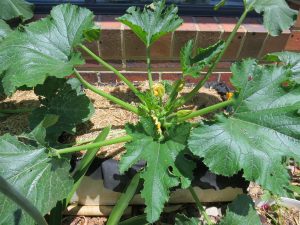
Reasons that pests may attack your garden
- Some pests thrive at certain times of the year (particularly outside of winter) which can coincide with the times that you want to grow certain produce.
- Certain conditions (like weather or rainfall) may lead to pests breeding quickly creating a short term plaque.
- Poor soil produces poor plants which are more vulnerable to attack especially with so called pests that actually aid decomposition in the garden (like snails or earwigs).
- Your garden may not attract beneficial insects or birds that are natural predators for pests which keep your garden’s ecosystem in balance.
- Your current solution to pests may be adding to the problem.
Because every garden is different and there is a lot of useful information online or in books, we have listed the ways that we deal with pests (rather than a how to for every possible pest) so that you can get an idea of this process in action.
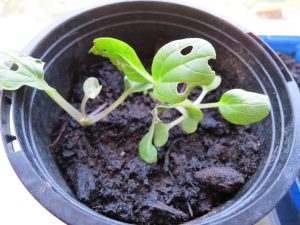
Weeds:
- Using mulch around plants stops soil from drying out and prevents weeds from growing.
- Learning about edible and medicinal weeds has enabled us to make use of some weeds that may show up in the garden.
- We don’t mind if weeds grow in unused areas as they help to colonise soil for other plants.
- Because weeds are full of nutrients, when we do pull them, we reuse them in our compost to build soil fertility.
- If your weeds have gone to seed or are vegetative reproducers, they either need to be hot composted (at 55 degrees Celsius usually achieved in a one cubic meter or more pile), can be cooked in a black bucket in a solar oven (we did this one year) or made into nutritious weed tea for your plants to stop them from reproducing.
- We avoid throwing weeds into the green waste bin as this strips nutrients from our garden.
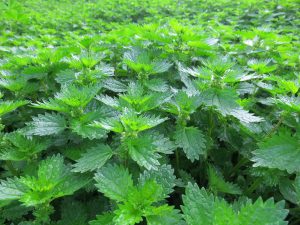
Pest Insects:
- We keep a record for when certain pests appear or increase in numbers in the garden to help us plan ahead for pest control in future years.
- Winter is a dormant period for pests in our region.
- We have built good soil for healthy plants that better resist pests and disease or are unattractive to decomposer insects.
- For plants that grow for most of the year, we skip the months when pests are a major issue for that particular plant to stop the problem before it can ever start.
- Certain plants are planted next to other plants to deter pests from the area (known as companion planting).
- We grow more seedlings than we need and transplant them when they are strong enough to deter pest attacks or major damage from a pest attack (works well for zucchini and eggplant).
- We also grow some extra plants as a buffer (e.g. 15 tomato plants instead of 10) and plant different varieties where pests are an issue.
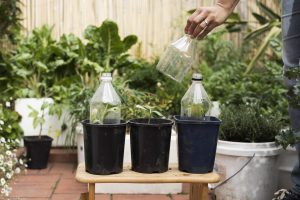
- We rotate crops to prevent disease.
- We try to attract predators to the garden (for example, ladybugs feed on aphids and like plants like chives or marigold and certain birds forage for slugs and are attracted to a well located bird bath).
- Some pests are only a problem in large numbers, for example, we find that slugs, snails and earwigs are only a problem at certain times of the year and can be collected at night for a week to reduce their numbers.
- We aim to learn from mistakes; for example, we used beer traps for slugs which made our slug problem a lot worse (we later found out that beer traps don’t kill all of the slugs that drink from them and can attract slugs from up to 100 metres away, as can slug pellets).
- Sometimes physical barriers like netting may be necessary; we put fly screen over lettuce seedlings at certain times of the year otherwise they get destroyed in a single night (slugs love to eat tender leaves).
- We noticed that slug and earwig damage is much greater in the front yard possibly due to the lack of food sources so we have added some easy growing food sources to give them something else to eat.
- We have blocked our wicking bed filler and drain pipes to prevent slugs from moving in.
- We accept that there will always be a little damage from insects and are happy to wear it as long as it is not excessive.
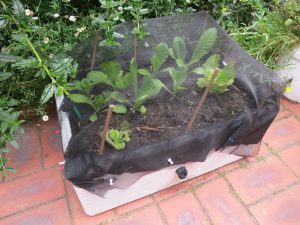
Our previous garden had almost no predators, though we had to net our tomatoes against birds whilst our current garden has lots of damp spots for slugs to hide in, yet is well protected from possums and has no predators like rabbits or deer. Your garden will be different to ours.
The next time you have unwanted weeds or pests, don’t despair. See them as the symptoms of a problem rather than the problem itself and use this as an opportunity to not only reduce their damage but to also improve your garden.